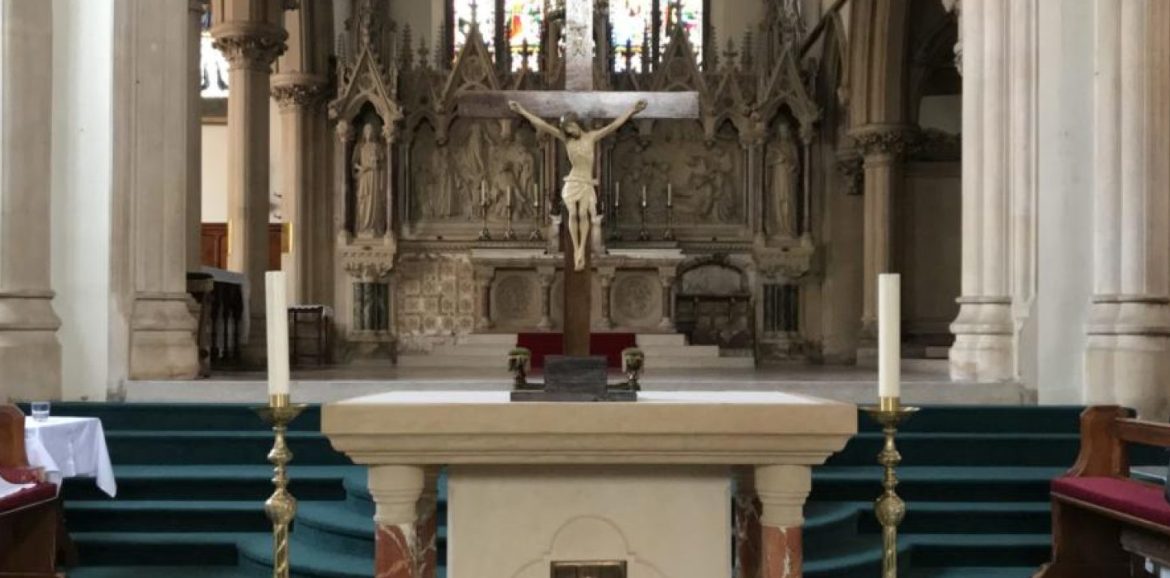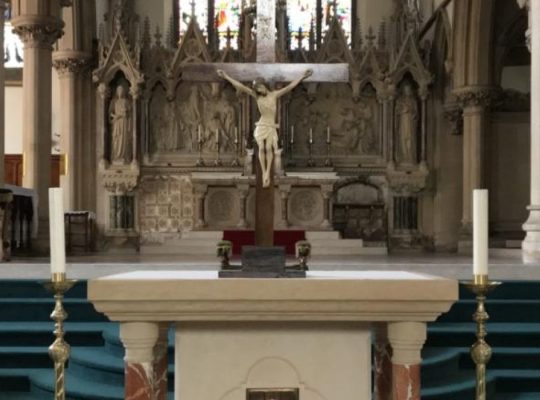After The Nativity of the Lord and The Solemnity of Mary the Mother of God, come two more major feasts which we celebrate over this weekend —The Feast of the Epiphany of the Lord, and The Feast of the Baptism of the Lord — with Christmastime ending with The Feast of the Baptism of the Lord.
What the Western Church celebrates on the Epiphany — a term of Greek origin — is expressed at the beginning of Mass:
‘The Lord and ruler is coming; kingship is his, and government and power’ (Entrance antiphon)
‘Father, you revealed your Son to the nations by the guidance of a star….’ (Opening Prayer)
It is therefore a question of the universal kingdom of Christ, of his manifestation — which is what ‘epiphany’ means — to the pagans. We typically speak of the Magi as the first fruits of the nations. The liturgy is not concerned with such matters. It does not fasten its gaze on the magi in order to proclaim thereafter what they represent. We might even say that it doesn’t see these personages as coming from the East. In any case, it does not distinguish them from the countless multitudes of nations to which, later, the only Son will be revealed. It already sees those nations following the star. Moreover, the liturgy proclaims what happens ‘today.’
It is not simply a matter of imaginative ways of speaking or of poetic and lyrical style. The liturgy refers to facts situated in time and which, as such, are never repeated. But they are events in the history of salvation in which God holds the initiative and in which, though invisible, he is the principal protagonist. These events, happening once and for all, transcend the time to which they belong in a special way. As revelation of God and of his plan of salvation that they accomplish, they bear fruit and do not perish. The liturgy re-presents them, that is to say, it makes them present and active ‘today.’ Not in their material components, but in their power— their grace— of salvation. Furthermore, these two opening texts of the Epiphany Mass are calls to understand the biblical readings that follow: as announcement of a mystery, of good news, of what is and will be.
The first reading of the Liturgy of the Word opens up the enormous panorama of the mystery and its various levels of fulfilment. Quite often—if not always— prophetic oracles are founded in facts, situations, real events to which the prophetis a witness either by personal involvement or through recollection in meditation. Under the power of the Spirit, prophets are able to fathom the depths of meaning in God’s plan for today and tomorrow. Often enough, the eye of the prophet is so perceptive that it reaches to the horizon of time. The prophet perceives, more or less confusedly, the fulfilment of all things. In light of the prophets experience, descriptions are rendered in images that belong to the poetic genre, the most apt language for describing such such visions. It has a universal character that makes it comprehensible in all times. Accordingly, this type of language continues to have an impact on us today.
When we hear the prophets read over and over throughout the years, the meaning of their announcements and visions gradually becomes clearer to us. We seem to view God’s plan anew, especially in the light of the mystery of Christ and the Christian faith. The liturgical context of these texts helps to make clear their entire meaning and importance. This is particularly true of Isaiah’s prophecy that is proclaimed on Epiphany.
The prophets gaze focuses on Jerusalem, to which he sees a long and joyous procession of her children who ‘come from afar,’ i.e. from the Exile from which God has delivered them. On the summit of Zion, the newly constructed Temple blazes with the light of candelabra. What a marvellous and glorious spectacle! ‘ One moment yet, a little while, and I will shake the heavens and the earth, the sea and the dry land. I will shake all the nations, and the treasures of all the nations will come in, and I will fill this house with glory……Greater will be the future glory of this house than the former….and in this place I will give peace.’ (Hag 2:6-9)
Thus, in his esoteric view, all is changed. The city appears to him brightly illuminated, ablaze with the glory of the Lord upon it, while the rest of the world remains in darkness. Toward this glittering light, it is no longer the throng of exiles or the procession of the Feast of Tabernacles that is marching up, but the countless multitude of nations and kings from every land. They bear their offerings — gold, incense, riches—while singing the praises of the Lord. The prophet sees this transfigured Jerusalem and he lets us see what looms beyond the horizon of history, the point to which all eyes look, the assembly place for all the nations marching toward the full manifestation — Epiphany. — of the Lord. Later on Saint John had a similar vision. Nevertheless, this epiphany is not some kind of mirage that moves farther off the closer one comes to it. When the Word was made flesh and dwelt among us, ‘we have seen his glory, the glory of the only Son coming from the Father’ From the beginning of his ministry, at Cana, by the many signs that he accomplished, Jesus,’the light of the world, revealed his glory, which is that of God.’ For a moment, the darkness of the passion appeared to veil it; yet it shone forth again when Christ was raised from the tomb. The preaching of the Gospel spread it to the four corners of the world and made it burn brightly in the hearts of believers.
The mystery of the Epiphany-the showing forth—of the glory of God is both a present reality and an object of hope. Seers in the Old and New Testaments were able to briefly contemplate the splendour of the Jerusalem to-come so that with this vision before our eyes we might join the multitude of nations marching toward the full Epiphany of the Lord while singing, with them, of our faith and hope.
We now turn our attention to our other major feast, The Baptism of the Lord, which is another major Epiphany of the Lord.
The Feast of the Baptism of the Lord is of relatively recent origin in the Roman Church, and its Liturgy of the Word is still tentative in the sense that of the three series biblical texts prescribed (Years A, B, and C) the first two reading of Year A can be used each year. However, it is important not to have too narrow a view of the mystery. This will happen if we limit ourselves to the fact that Jesus submitted himself to the baptismal rite that John the Baptist practiced in the waters of the Jordan, Each of the four Gospels has transmitted some recollection of what happened. Matthew recounts in detail; Mark and Luke are content to merely mention it. John does not speak explicitly of the baptism but only of the Baptist’s attesting that he had seen the Spirit descend on Jesus, ‘the. Chosen one of God.’ One must refer to the Synoptic Gospels.
All three have in common their corroboration that the Spirit came over Jesus, and the voice was heard. The event is therefore a theophany that happened on the occasion of Jesus’ baptism. This explains why the Eastern Church celebrates the Baptism of the Lord on Epiphany, for it was the manifestation of his status as the chosen one, the Son of God. In the Latin Church, the Feast of the Baptism of the Lord has the same focus, as the entrance and communion antiphons clearly state.
‘When the Lord had been baptised, the heavens opened and the Spirit came down like a dove to rest on him. Then the voice of the Father thundered: This is my beloved Son, in whom I am well pleased.’ (Entrance antiphon)
‘This is he of whom John said I have seen and have given witness that this is the Son of God. (Communion antiphon)
Yet, one cannot dissociate the baptism of Jesus from that which he himself instituted in order to be given to those who believe in him. Not only because of the similarity of the rites, but because of the witness of the Baptist reported by the Fourth Gospel:
‘The one who sent me to baptise with water told me, when you see the Spirit descend and rest on someone, it is he who is to baptise with the Holy Spirit.’
In fact, the liturgy places Christian baptism in the perspective of the divine manifestation that took place upon the baptism of Jesus by John.
As the manifestation —epiphany—of the Lord, the baptism of Jesus proclaims the baptism that elevates believers to the status of sons and daughters of God. It is a salvation event, a mystery and not an anniversary, that the last liturgy of Christmas celebrates. A mystery that must be meditated upon and lived in the light of Scriptures, both Old and New Testaments.


